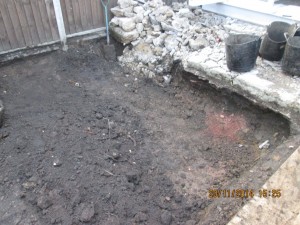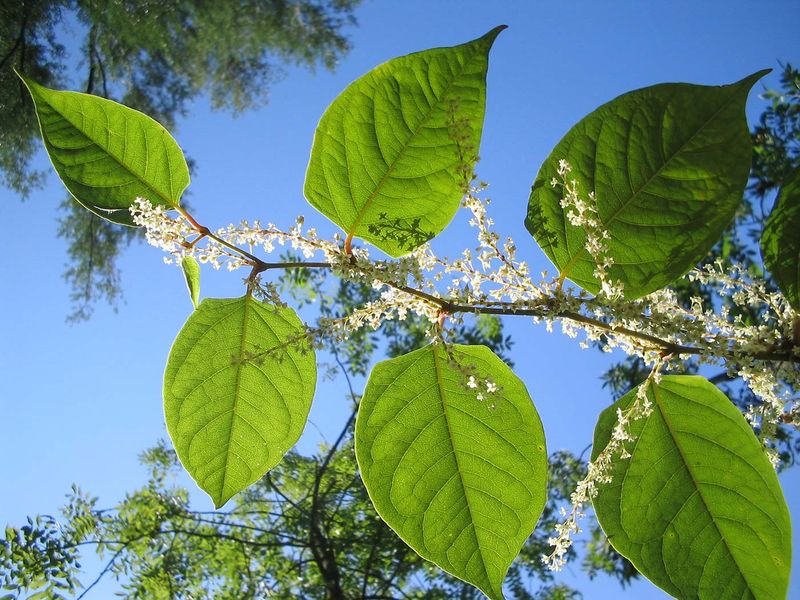Conor Leyden, managing director of the Invasive Plant Company, describes the devastating impact that Japanese Knotweed can have on homes, but there are ways to eliminate it
So much has been written about Japanese Knotweed in recent times and it seems as though the media has whipped up a frenzy within the residential market. Homeowners are being warned about weeds that can de-value a property or grow through the kitchen floor and invade your house.
 It is not unusual to hear that house sales have fallen through or that a remortgage has been turned down because of the presence of Japanese Knotweed, certainly our members take a number of calls on the matter each week.
It is not unusual to hear that house sales have fallen through or that a remortgage has been turned down because of the presence of Japanese Knotweed, certainly our members take a number of calls on the matter each week.
While some of these aspects are true it is clear that the media can hype and sensationalise these stories, which only adds fuel to the fire. We see a huge increase in enquiries for help and advice when certain stories are released.
While homeowners may not be as responsive as professional bodies and private sector professionals, it is clear that there are differing levels of risk attributed to Japanese Knotweed by both lenders and surveyors. The following points try to clear up some of the facts and myths that are attributed to this invasive species.
Identification
When dealing with property with a suspected outbreak of Japanese Knotweed, there should be a clear process followed to identify the presence and risk to the property.
While it may seem obvious the most important aspect is identification, Japanese Knotweed is a perennial weed which means that it will grow again from the same root the following season. But as you may not be aware, the weed takes on four main stages of growth all of which are very different. Depending on the time of year the survey takes place the weed can be almost un-recognisable between these stages of growth and can easily be mistaken for other plants.
For example, the early growth looks similar to asparagus, while in September, the plant turns from a dense green colour to a cream white with dense flowers covering vast swathes of the plant. In winter the dried hollow stems turn brown and lose all leaf coverage and its green colouration, making identification very difficult indeed.
That said, there are a number of companies and organisations in the market place where you can download identification cards that are a handy tool to use. The Invasive Plant Company has a useful download and the Non Native Species Secretariat has a large selection of identification pages of Japanese Knotweed and other invasive species.
Concealing the weed
So if the plant can be identified in its natural state then the risk can be quantified. However, what happens if the weed has been concealed?
With public knowledge of Japanese Knotweed increasing day by day this has resulted in a number of homeowners (and commercial owners) deliberately concealing the presence of Japanese Knotweed to deliberately fool the surveyor.
This is also not limited to house valuation surveys. We as professionals are increasingly being asked to visit sites that are on the market to confirm the absence of Japanese Knotweed where blatant attempts have been made to conceal the presence of invasive species.
While there is little surveyors can do to counteract concealment, there is a simple way to protect themselves. As Japanese Knotweed is so prevalent on the landscape one or two photographs of the external space to the property is usually enough to protect the surveyor and their professional indemnity insurance. From a photo it will be straightforward to determine if the Japanese Knotweed was cut down or concealed at the time of the survey.
Case study
This case study looks at a residential property near Hampstead Heath, north west of London, where a property developer purchased a four-bedroom mid-terrace house before extending and modernising prior to resale for just under £2 million.
 The main part of the works involved a single story kitchen/diner extension to the rear garden before a high specification internal modernisation.
The main part of the works involved a single story kitchen/diner extension to the rear garden before a high specification internal modernisation.
We understand that the initial purchase did not involve a mortgage and as such was not subject to a valuation survey and at the start of the extension works a number of mature stands of Japanese Knotweed existed within and beyond the proposed extension.
We were called in by the developer following a sale that fell through due to the presence of Japanese Knotweed at the rear of the garden, which we identified and so began a four-year treatment programme. Following our commencement of treatment we duly issued our Insurance Backed Guarantee which allowed any future sale to proceed which, in the following few weeks, it did and the property changed hands. At this point we assigned our warranty to the new owner and briefed them on the process and instructions for our future works.
It was at the start of the second year of treatment that the problem manifested where Japanese Knotweed started to grow in other areas of the garden and in particular adjacent to the newly constructed kitchen / diner. Within a few weeks it as clear that the Japanese Knotweed was completely ignored by the original developer and that the extent of infestation was far greater than first envisaged.
While the original areas of infestation were covered by our works, further outbreaks of Japanese Knotweed were not and by this stage the patio was then being broken up by the weed and growth was heading towards the extension.
Worried about the problem the client instructed us to carry out some investigation and start to excavate under the patio and up to the foundations of the house. What we found resulted in the owner having to move out of the property while we removed 60 tonnes of contaminated soil through their house as mature Japanese Knotweed extended beneath the extension!
With the use of some clever ideas combined with some further landscaping works we limited the amount of material that needed to be excavated with the use of root barrier membranes but it still had a significant price tag of £18,000 plus the inconvenience of the residents moving out of their new property for the duration, not to mention transporting of 60 tonnes of soil through the new high specification house.
This may be an extreme case of concealment but it does happen and can result in significant costs and inconvenience for the homeowner which will raise questions as to why this wasn’t spotted at the time of the valuation survey. This is where a record of the condition of the garden at the time of the survey is invaluable.
[box style=”1″]
Mortgages and knotweed
Fallopia Japonica, to give Japanese Knotweed its Latin name, is described as a ‘real thug’ by the Royal Horticultural Society. It grows rapidly, and can sprout through concrete – both indoors and out.
According to Mitesh Lala, a residential property expert with Black Country law firm Higgs & Sons, it can take up to seven years to eradicate. And anyone failing to control its spread could be hit with an ASBO or fined thousands of pounds. So whether you are buying or selling a property, the financial and legal implications of this tenacious weed are serious.
Lala says: “It is important that homeowners identify and appreciate the risks in selling their property if there are any signs of Japanese Knotweed – this will save them time, stress, and ultimately, a lot of money.
“Typically, the average mortgage provider will be reluctant to lend where there is any evidence of Japanese Knotweed. Whilst there is no blanket policy in place for lenders to refuse to lend, a seller runs the risk of the buyer being unable to proceed because their lender simply decides to decline their mortgage offer – due the presence of knotweed. The best the seller might hope for is an open-minded lender willing to assess the issue on a case by case basis, who will proceed when the prospects of successful treatment have been ascertained from the outset.”
A typical scenario might be that the lender is willing to proceed with the mortgage subject to a retention of funds from the borrower, perhaps £15,000, until it is satisfied that the knotweed has been treated and eradicated.
The buyer will either make up the shortfall himself to allow the purchase to go through, or insist that the seller bears the shortfall and accepts a reduced sum equal to the amount being held back by the lender (but that the seller would receive that balance once the lender releases the retained amount to the buyer).The sale can therefore proceed, but there is a delay in the buyer and/or seller receiving the retained balance from the lender.
Lala adds: “In theory, the lender should accept a completion report from the treatment specialist confirming the operation as being successful and that no re-growth of knotweed will occur. The seller will, however, continue to run the risk of being at a financial shortfall until the lender is satisfied with the final report.
“A seller should guard against this risk by checking early for any invasive plants before marketing the property, and spring is the right time to do this, as the plant will be much easier to spot and identify.
“If in doubt, with a growing industry for knotweed removal specialists, sellers now have access to a wide network of experts to call upon, who are able to inspect the site for contamination. The seller should ensure the contractor is able to offer a warranty, and be mortgage lender-approved.”
Make sure you use a reputable, specialist company to eliminate Japanese Knotweed, otherwise the problem could be made worse.
[/box]




